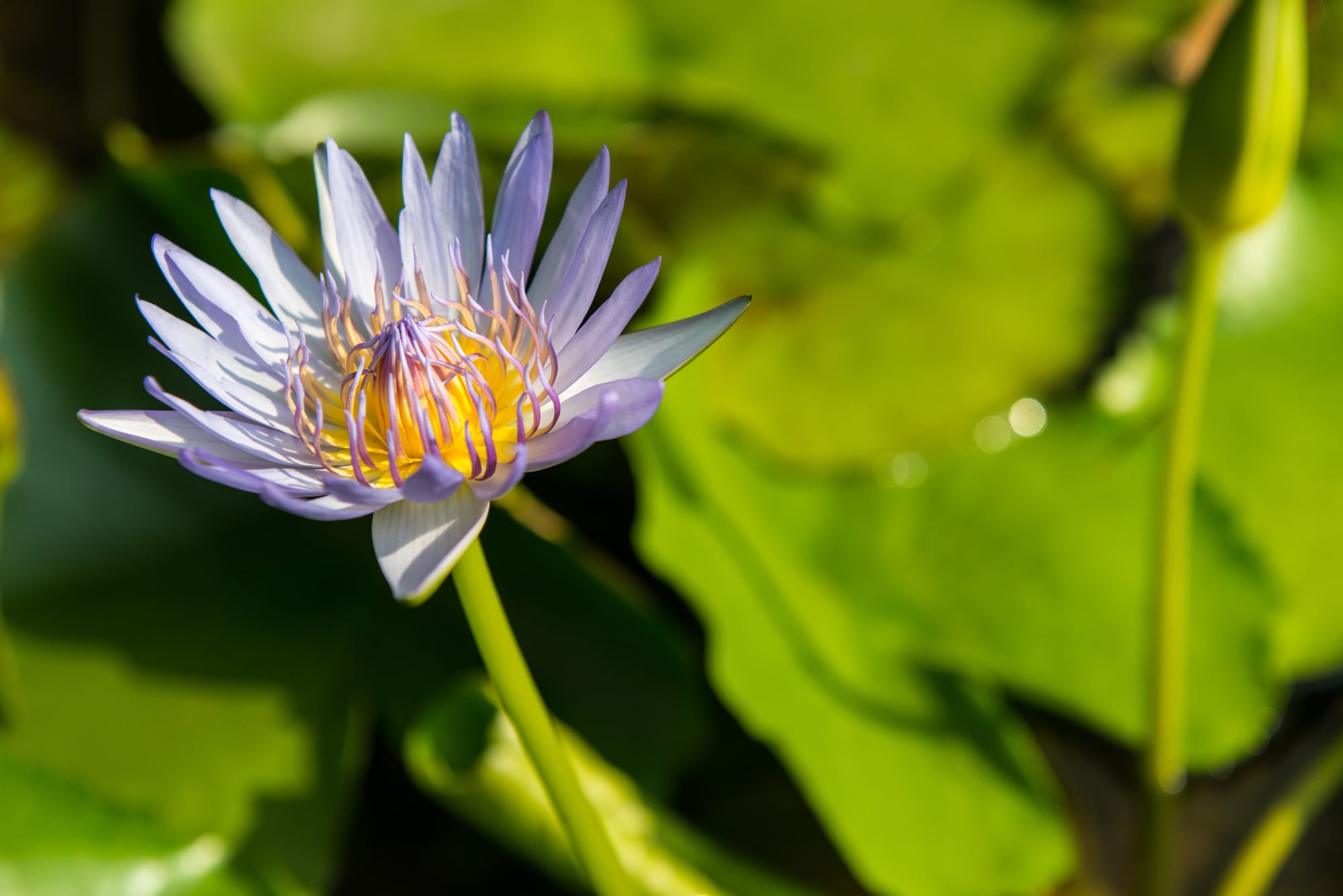What is the purpose of meditation?
Why meditate? Just these two words can initiate a passionate discussion. But really, why do we meditate? After years of searching for the answers, learning from many teachers, and inquiring in silence during retreats, I now have a straightforward answer. You meditate to light up the path home - to reunite with your true self.
Negative energies stifle your true self. We are bombarded daily by messages indicating that we are not good enough. Increasingly polarized social media content, and media at large, encourage us to be angry and egocentric. A toxic work culture exploits our insecurities. Socially, we feel marginalized when superficial, throwaway, and cancel cultures have dominated. We constantly wish that we were someone else, somewhere different, living an alternative life. Many of us use unhealthy distractions to numb and self-medicate. It’s baffling to think that any human would hand over our most precious gift - our true self - to people and substances that do not have our best interests at heart. But if you have experienced this vicious cycle of regret, pain, and anxiety, you understand that a temporary relief, however brief, is far too tempting in comparison to being in the dark trench alone. We are all just humans, after all.
Sounds pretty grim, right? It sure does. Life is bittersweet. I have good news and bad news for you. The good news is that with practice, not only will you be able to light up your path, but you will also become the light for others. The bad news is that meditation isn’t magic. Meditation turns down the volume of the noise so you can cultivate calmness and operate at your own will, but transformative healing takes time, space, and effort. Once the light is on, there could be a tsunami of emotions as you face reality for the first time. You will have to locate the roots of the weeds and do the hard work yourself. There will be thorns that cut and stubborn roots that refuse to be pulled out. With clarity and strength, you will know when and who to seek help from along the way. Meditation teachers and therapists, in addition to family and friends who love you, can be a great support, especially at the initial stage.

How to meditate?
The ultimate goal of meditation is to bring you back to the present moment. The space between your thoughts about the past and future is the pathway to your true self. As you practice more, those spaces between your thoughts will expand. Over time, you can dwell in these spaces and sit with yourself for longer with ease.
Bringing ourselves back to the present moment requires us to change our anchor, the object of focus, from the future or the past to the present. There are many kinds of anchors, and we will highlight the most common ones here. More detailed explanations and approaches will be provided in future blogs.
- Breath: Probably the most common anchor, especially for beginners. Breath is our life force, and we must continuously renew our breaths in order to survive. Each breath is fresh and can only be done now, making it a simple and easy-to-understand anchor.
- Four corners of your feet: Many students have said they don’t meditate because they find sitting still difficult. My answer to this challenge is to try walking meditation instead. If you walk mindfully and continuously, then, in fact, walking is quite similar to breathing. Each step is fresh and in the present moment.
- An image of something or someone: Visualization strengthens the body and mind alignment, allowing you to achieve more in the physical world by following the trajectory set by your mind. Positive imaging also has a soothing effect because your mind cannot distinguish something being visualized from something actually happening in real time. One example of visualization meditation is Metta, also called love and kindness meditation.
Once you have made a decision on your anchor, you simply pay attention to the anchor. When your mind drifts away, gently bring it back to the anchor. It is the muscle of bringing the attention back to the anchor that we are building through meditation. The goal of meditation isn’t to empty your mind, as many assume. The practice is to be an observer of your mind and not allow your mind to have so much power to bring you to the past or the future. When it does get carried away, use the mindfulness muscle to bring it back to the present moment.
How to start?
There are many different approaches to bring you to the present moment. To start, all you have to do is choose one and find a comfortable place to sit. I highly recommend starting with an app. The two that include my meditation teachings are InsightTimer and Unplug Meditations. Start with a short 5-to-10-minute one, but commit to it for a few weeks. I have some free tracks on InsightTimer here and here that can get you started. Research has shown that daily meditation takes 45 to 60 days before seeing the benefits.
As you begin your meditation journey, just remember humans tend to underestimate what we can achieve in the long term. Starting with bite-sized sessions and gradually increasing to be consistent for at least two months is the best way to start your meditation practice.
Enjoy the inner journey!

无法冥想?读完这篇文章再试试
冥想的目的是什么?
为什么要冥想?这个问题足以引发一场激烈的讨论。但实际上,我们为什么要冥想呢?多年来,我试图探寻答案,请教老师,闭关探询。现在,我有了一个直截了当的答案。冥想是为了点亮回家的路径——与真实的自我重聚。
负能量扼杀真实的自我。每天信息狂轰滥炸,告诉我们自己还不够好。社交媒体内容日益极化,媒体的大肆渲染,促使我们愈发愤怒、以自我为中心。不良的工作文化利用我们的不安全感。社交上,肤浅、轻佻和呛声文化占主导地位,使我们感到边缘化。我们不断希望自己成为别人,身处另一个地方,过着不同的生活。我们许多人通过不健康的消遣麻木、治疗自己。想到竟然把我们最珍贵的礼物——我们真实的自我——拱手交给那些对我们不利的人和物,真是令人困惑。但如果你经历过后悔、痛苦和焦虑的恶性循环,你就会明白,与在黑暗的沟壑中独自一人相比,即使是短暂解脱也极其诱人。毕竟,我们都只是人类。
听起来很丧,对吧?的确如此。生活苦乐参半。我有一个好消息和一个坏消息告诉你。好消息是,通过实践,你不仅能够点亮你的路径,还能成为他人的光。坏消息是冥想不是魔法。冥想降低噪音的音量,让你培养平静,按照自己的意愿行事,但转变性的疗愈需要时间、空间和努力。一旦灯亮了,你或许会因为第一次面对现实,迎来情感的海啸。你将不得不找到杂草的根源,自己努力解决这些问题。荆棘会割伤你,顽固的根茎拔不出来。但有了明确的意图和强大的力量,你便会知道何时、向谁寻求帮助。冥想老师和心理医生,以及爱你的家人和朋友,都可以提供巨大的支持,特别是在初期阶段。
如何冥想?
冥想的最终目标是将你带回当下。过去和未来的思绪之间的空间是通往真实自我的路径。这些思绪之间的空间将随实践而扩展。伴随时间的推移,你可以在这些空间中停留,轻松地与自己相处更久的时间。
将自己带回当下,需要我们改变锚点,将焦点从未来或过去转向当下。有许多种锚点。我们将重点介绍最常见的几种锚点,更详细的解释和方法将在以后的博文中提供。
- 呼吸:可能是最常见的锚点,尤其是对初学者而言。呼吸是我们的生命力,我们必须不断重新呼吸才能生存。每一次呼吸都是新鲜的,只能在现在完成,因此它一个简单易懂的锚点。
- 双脚的四角:许多学生说他们不冥想,是因为他们觉得静坐很困难。我的回答是尝试行走冥想。如果你有意识地连续走路,那么行走和呼吸也没有太大区别。每一步都是新鲜的、当下的。
- 某物或某人的形象:视觉化形象让身心更加一致,使您遵循心灵设下的轨迹,在物质世界中取得更多成就。想象出积极的形象还具有舒缓的效果,因为你的心灵无法区分被视觉化的事物和实时发生的事物。视觉化冥想的一个例子是慈悲(Metta)冥想。
一旦你决定了你的锚点,你便只需专注于这个锚点。当你的思绪飘离时,那就慢慢将它带回锚点。通过冥想,可以塑造将注意力带回锚点的肌肉。冥想的目标不是像许多人所认为的那样去清空你的思维。在实践中,成为你心灵的观察者,不要让你的心灵拥有太多的力量,将你带回过去或未来。如果思绪真的被带走,使用正念的肌肉将其带回当下。
如何开始?
有许多不同的方法可以将你带回当下。一开始,你只需要选择一种方法,并找到一个舒适的地方坐下。我强烈建议从一款应用程序开始。
InsightTimer和Unplug Meditations这两款应用包含了我的冥想教学课程。不妨先从短暂的5到10分钟课程开始,但要持之以恒,坚持几周。我在InsightTimer上有一些免费的入门课程(here and here)。研究表明,需要每天冥想45到60天才能收到成效。
当你开始冥想之旅时,只需记住,人类往往低估自己坚持不懈所能取得的成就。从小而精的练习开始,逐渐加量,至少坚持两个月,是开始冥想之旅的最佳途径。
享受内在之旅吧!



Member discussion